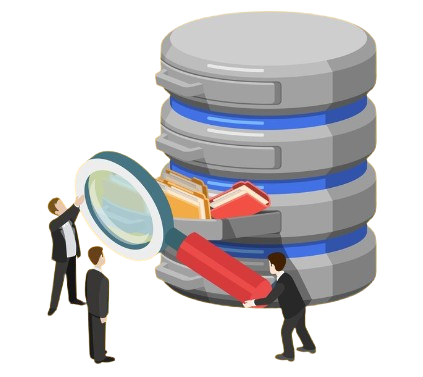The debate between Data Lakes vs. Data Warehouses ultimately comes down to your organization’s unique needs, goals, and resources. Both solutions offer distinct advantages, and understanding these differences is key to making an informed decision.
In the modern era of data-driven decision-making, organizations are increasingly faced with the challenge of choosing the right data management architecture. Two popular options that frequently come up in these discussions are Data Lakes vs. Data Warehouses. While both solutions are designed to store and manage large amounts of data, they serve different purposes. Each option offers unique benefits tailored to specific use cases. Understanding the key differences between Data Lakes and Data Warehouses is essential. This knowledge will help you determine which solution best suits your organization’s needs.
Understanding Data Lakes
A Data Lake is a centralized repository that allows you to store all your structured and unstructured data at any scale. It can hold data in its raw form, meaning it doesn’t require any predefined schema. This flexibility makes Data Lakes an attractive option for organizations managing diverse data sources, including logs, social media feeds, and sensor data. Their ability to handle various data types enhances adaptability and insights.
One of the primary advantages of a Data Lake is its ability to store massive amounts of data. Organizations can do this without worrying about storage limitations or costs. This feature makes Data Lakes particularly useful for organizations that need to retain data for long periods. Even if they are still determining how they will use that data, it remains accessible. Additionally, Data Lakes are well-suited for advanced analytics, machine learning, and big data processing. They allow data scientists and analysts to access and manipulate raw data directly, facilitating deeper insights.

However, the flexibility of a Data Lake can also be a double-edged sword. Without proper governance and organization, Data Lakes can become “data swamps,” where finding relevant information becomes challenging. Therefore, organizations must implement robust data management practices to ensure that their Data Lake remains clean and usable.
Understanding Data Warehouses
On the other hand, a Data Warehouse is a more structured and organized data storage solution. Unlike Data Lakes, Data Warehouses require data to be cleaned, transformed, and organized before being stored. This structured approach makes Data Warehouses ideal for reporting, business intelligence, and operational analytics.
Data Warehouses excel at handling large volumes of structured data, such as transactional records, customer information, and financial data. Because the data is pre-processed and organized, users can quickly run queries and generate reports without the need for complex data preparation. This makes Data Warehouses an excellent choice for organizations that rely on real-time analytics and decision-making.
However, the structured nature of a Data Warehouse also means that it may not be as flexible as a Data Lake when it comes to handling unstructured or semi-structured data. Additionally, the process of cleaning and transforming data before loading it into a Data Warehouse can be time-consuming and resource-intensive.
Data Lakes vs. Data Warehouses: Key Differences
When comparing Data Lakes vs. Data Warehouses, several key differences emerge that can help organizations determine which solution is right for them:
- Data Structure: Data Lakes can store raw, unstructured data, while Data Warehouses require structured, organized data.
- Purpose: Data Lakes are designed for storing vast amounts of data and supporting advanced analytics, while Data Warehouses are optimized for business intelligence and reporting.
- Data Processing: In a Data Lake, data is processed at the time of analysis, while in a Data Warehouse, data is processed before storage.
- Flexibility: Data Lakes offer greater flexibility in terms of data types and formats, while Data Warehouses provide a more structured environment for specific use cases.
- Cost: Data Lakes are generally more cost-effective for storing large volumes of data, while Data Warehouses may require more resources for data transformation and storage.
Choosing the Right Solution for Your Organization
When deciding between Data Lakes vs. Data Warehouses, it’s essential to consider your organization’s specific needs and objectives. If your organization deals with diverse data sources and needs to perform advanced analytics, a Data Lake may be the better option. It offers the flexibility in data storage that many businesses require. Conversely, if your organization relies heavily on real-time reporting and business intelligence, a Data Warehouse may be more suitable. It excels in handling structured data for efficient analysis.
In some cases, organizations may benefit from a hybrid approach that combines both a Data Lake and a Data Warehouse. This strategy allows them to leverage the strengths of each architecture effectively. They can use a Data Lake for raw data storage and exploration, which supports diverse data sources. Meanwhile, a Data Warehouse can handle structured, operational analytics for more refined insights.
Conclusion
In conclusion, the debate between Data Lakes vs. Data Warehouses ultimately comes down to your organization’s unique needs, goals, and resources. Both solutions offer distinct advantages, and understanding these differences is key to making an informed decision.
For businesses looking to navigate the complexities of data management, tanbits offers big data services that can help you choose and implement the right solution for your organization, ensuring that your data is managed effectively and efficiently.
Whether you opt for a Data Lake, a Data Warehouse, or a combination of both, the right data management architecture can unlock new opportunities for insights, innovation, and growth in your organization.
BACK










